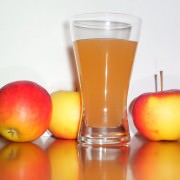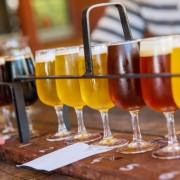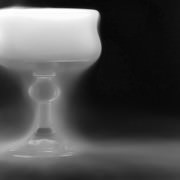How to Make Your Own Infused Alcohols
With the slow food revolution and the ever-increasing trend toward artisan / small batch / made-from-scratch consumables, craft alcohols such as infused vodkas are only continuing to rise in status. In fact, unique mixology that capitalizes on the craft alcohol trend is the hottest customer draw out there right now, so why isn’t your bar cashing in? Perhaps it’s because you don’t know where or how to start introducing more artisan items into your menu. Since I always want to help bars make more money, I’m here to get you on the right path. This is your quick and easy guide to making infused alcohols.
Step 1: Choose Your Alcohol
It’s easier to infuse light spirits, so as a beginner, you should decide if you would rather infuse vodka, gin, sake, or light rum. As with all things, higher quality alcohol makes for higher quality infusions–as liquors with a crisp, clean taste won’t get in the way of the infusion flavor. Don’t use up your best brands though, mid-shelf liquors are usually good enough to infuse.
If you’d like to make things hard on yourself, you can work with a darker alcohol, but you’ll have to infuse those with bolder flavors, and darker alcohols will take longer to extract enough flavor to taste.
Step 2: Choose Your Infusion
Fruits, herbs, and spices are the most popular infusion flavors–with fruit leading the pack for popularity. Depending on how adventurous you are, you can either choose traditional flavors like berries or oranges, or you can choose more daring flavors like garlic or peppers (or flowers, like the picture above). You don’t have to use a plant either, people have made vodka infused with bacon*, cake, whipped cream, marshmallows, and Jolly Ranchers. Remember that you can also combine flavors as well, such as mango and chile pepper. Whatever you choose, make sure it’s fresh.
When you’re thinking about what you want to infuse, consider what drinks you might want to mix it with. If you’re making a Sex on the Beach or a Cosmopolitan, consider sweet flavors. If you’re making a martini or a Bloody Mary, consider savory flavors.
*If you want to make bacon vodka, you’ll actually use about 2 T of cooked bacon fat, not the actual bacon.
Step 3: Clean and Prepare Your Ingredients
Thoroughly wash your infusion item to make sure that you get rid of any impurities that will make your alcohol taste strange. Dirt and chemicals tend to be the most common unwanted flavor “enhancers,” plus, they can leave embarrassing floaters in your drinks.
Remember that you want to extract as much flavor as you can from your infusion items, so you may need to cut them, smoosh them, peel them, or otherwise prepare them. One good rule of thumb is to make sure that your ingredients are highly aromatic. If you use soft berries, you can smell them easily with no prep work. However, if you use cranberries, you might want to cut those up, or mush them in some way, so that you can smell them really well. If you’re using peppers, make sure none of the seeds get into your alcohol. Pepper seeds are really, really spicy, and may make your alcohol too hot to drink.
Step 4: Clean Your Infusion Containers
Yes, the alcohol will kill all the germs, I know, but once again, you want to make sure that your containers aren’t imparting unwanted flavor enhancers to your infused alcohol. You’re going to be infusing in mason jars, and if your mason jars are as old as mine, you’re going to have to dig them out of the backs of forgotten closets where scary insects live. No one at your bar wants their drink to be infused with the light and delicate tang of Daddy Long Legs, so wash out those jars.
Step 5: Begin Your Infusion
This is the super easy part. Put a little bit of your infusion ingredient into your mason jar, cover with alcohol, shake a little bit, and screw on the lid. Done.
Use about two cups of your ingredient if you’re infusing with fruit, a couple of handfuls if you’re using fresh herbs, and as many peppers as you want. Remember that you can always infuse longer for a stronger taste–or just add more of your ingredient later and continue your infusion. My simple advice: Start with the minimum, unless what you’re using has a really mild flavor.
Step 6: Monitor Your Infusion
Okay, you know how easy the last part was? This step makes up for it. It’s not like it’s hard to monitor your infusion–all you have to do is shake it at regular intervals and taste test it–but it is kind of a pain in the butt. Everything has a different infusion time.
Hot peppers can infuse for 1-2 hours and need to be tested frequently because they can ruin your alcohol if they over-infuse.
Most herbs, veggies, and citrus (and zests) can infuse for 3-4 days.
Light, summery flavors like strawberries can infuse for 1 week.
Really mild flavors like lemongrass can infuse for 2 weeks.
The important thing to remember is that you need to be checking your concoctions regularly. Once a day should be enough, unless you’re using hot peppers (see above). If you over-infuse something, it might be dreadful, and if you under-infuse something, it’s a waste of your time. Keep a log of how long each item infused, and you’ll know what to expect for the next batch.
Oh, and during this time period, store all of your jars in a cool, dark place, like under a cabinet, or buried back in the closet with the spiders. Pull them out three times a day and shake them up, then return them to their spidery hiding place. On second thought, since you’re going to be handling these jars multiple times a day, keep them away from the spiders. Finding a Brown Recluse on your pinky will make you drop a whole mason jar of Stoli.
Step 7: Strain Your Alcohol
When your alcohol tastes perfect, strain it. To do that, you’ll want to spoon out any large infusion items (like whole stalks of rosemary), and then strain the liquor through a fine strainer or a coffee filter. If you use a coffee filter, please pour slowly, as they drain really slowly. Feel free to put the alcohol back into its original bottle, as long as you wash the bottle first.
Step 8: Add Your Finishing Touches
Now, you can turn your infused alcohol into an artisan drink, and enjoy the benefits of the craft alcohol revolution in your own bar. Not sure what to mix up? Here are two ideas to start you off.
Pear Gin Cocktail
2 ounces pear-infused gin
1 ounce lemon juice
½ ounce simple syrup
Splash of Prosecco
2 slices of pear
Sprig of rosemary
Mix the gin, lemon juice, and simple syrup in a shaker with ice, then strain over ice. Add the Prosecco, then top with a garnish of the pear and the rosemary. Enjoy!
Moroccan Martini (from Absolut)
7 parts orange-infused vodka
1 part lime juice
Splash of simple syrup
5 mint leaves
Mix the vodka, lime juice, and simple syrup in a shaker with ice, then strain into a chilled glass. Garnish with a mint leaf.
A Closing Word
As always, make sure that you advertise your infused drinks so that people order them and tell their friends about your bar. To advertise your infused drinks, you can Tweet, post on Facebook, create table tents, and put a sign in the front window or above the bar. Let me know how your infusions went. I’d love to know what ingredients you used and how they turned out!
Photo licensed by Nomadic Lass
- Why Your Wine Menu Is Scaring Your Guests - February 27, 2015
- How to Host a Better Restaurant Week and Get More Customers - February 23, 2015
- Choosing Your Restaurant Wine Glass – 3 Approaches - February 16, 2015









